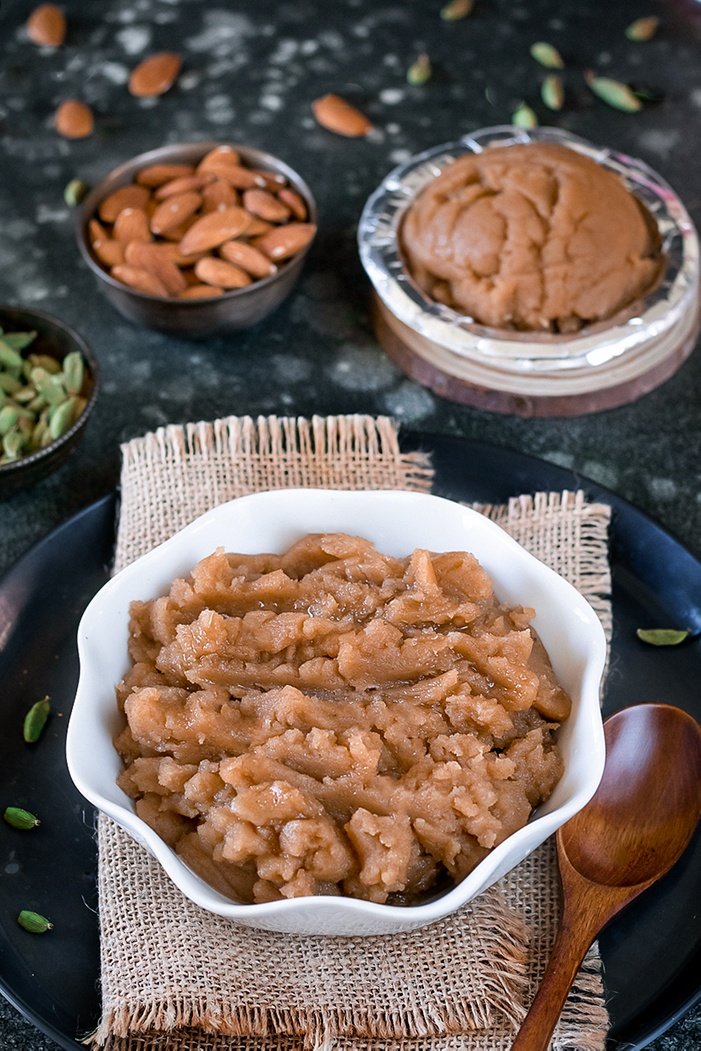Beautifully Binding Faith And Flavours Together – Kadah Prasad!
People never return home empty-handed from Gurudwara. Kadah Prasad is one of the famous sweet delicacies served as a prasad across Gurudwaras, signifying the blessings the Guru bestows upon you. It is more than just a halwa! Let us get to know a little more about its history and legacy.
Introduction:
Kada Prashad is smooth and velvety halwa made with whole wheat flour (atta). This divine delish is simple to prepare and requires four essential ingredients. It is served in Sikh temples post-Ardas. It is distributed to all after areas, signifying all humans were created equal. It is a simple wheat flour pudding. The offering and receiving of this sweet signify community service and hospitality, both virtues that Sikhs hold very dear.
No matter which Gurdwara you visit across the globe, Be it the Golden Temple of Amritsar or the one located in your locality, you will always have Kadah Prasad offered. Moreover, no additional, extra, or unique changes are there to the ingredients used anywhere it is made. So how did this tradition begin? Did our Gurus initiate this? Or was it a requirement of Rehat Maryada? To understand this better, we need to delve into the history and origin of Sikhism.
The Traditional Heritage:
The religion of Sikhism originated and evolved further in the Punjab region of the India during 15-17th century. It is majorly based on the teachings of Guru Nanak, the first Guru. There are ten successive Gurus in Sikhism. After the tenth Guru, ‘Guru Granth Sahib’, the holy book, was given the ‘Guruship’ or made the Guru by the 10th Guru, Shri Guru Gobind Singh. Panch Takht, or the five main Gurudwaras in India, are Amritsar, Anandpur Sahib, Bathinda, Patna and Nanded.
Prasad’s giving and receiving is an essential components of hospitality traditions. It has the same amount of whole-wheat flour, clarified butter, and sugar to emphasise the equality of men and women. Everyone receives an equal portion from the same bowl served by the Sewadar. During the initiation of Amrit Sanchar, Prashad was also taken and distributed evenly to everyone.
It is prepared by bathing beforehand and reciting hymns from the Guru Granth Sahib during the preparation process. As a sign of cleanliness, it is covered with a white towel after cooking and sprinkled with water. After that, it is placed near the Guru Granth Sahib. With a small kirpan (sword), it is stirred during the Ardas. It is then given to all present as a sign of their equality and unity.
Guru Gobind Singh gave the recipe, thus the experience of receiving the Guru’s Parshad acts as a reminder that all blessings are Guru’s kirpa (grace). It preaches that everything that we are receiving in life is valuable and sweet to us because it comes from the Guru.
Members of the Sangat (congregation) frequently donate components for Kara Parshad to honour important occasions in their own lives. It would be best if you always accepted the prasad while sitting down with your hands cupped and raised high to the sewadars serving it. The Parshad is then taken to the palm and eaten.
These traditions make the dish even more special. It is closely associated with the emotions of millions of devotees across the globe and evokes a sense of spirituality. Over the years, it has become a part of the culture. WTR has a delicious recipe on their channel, so if you plan to cook tonight, then check it out!






